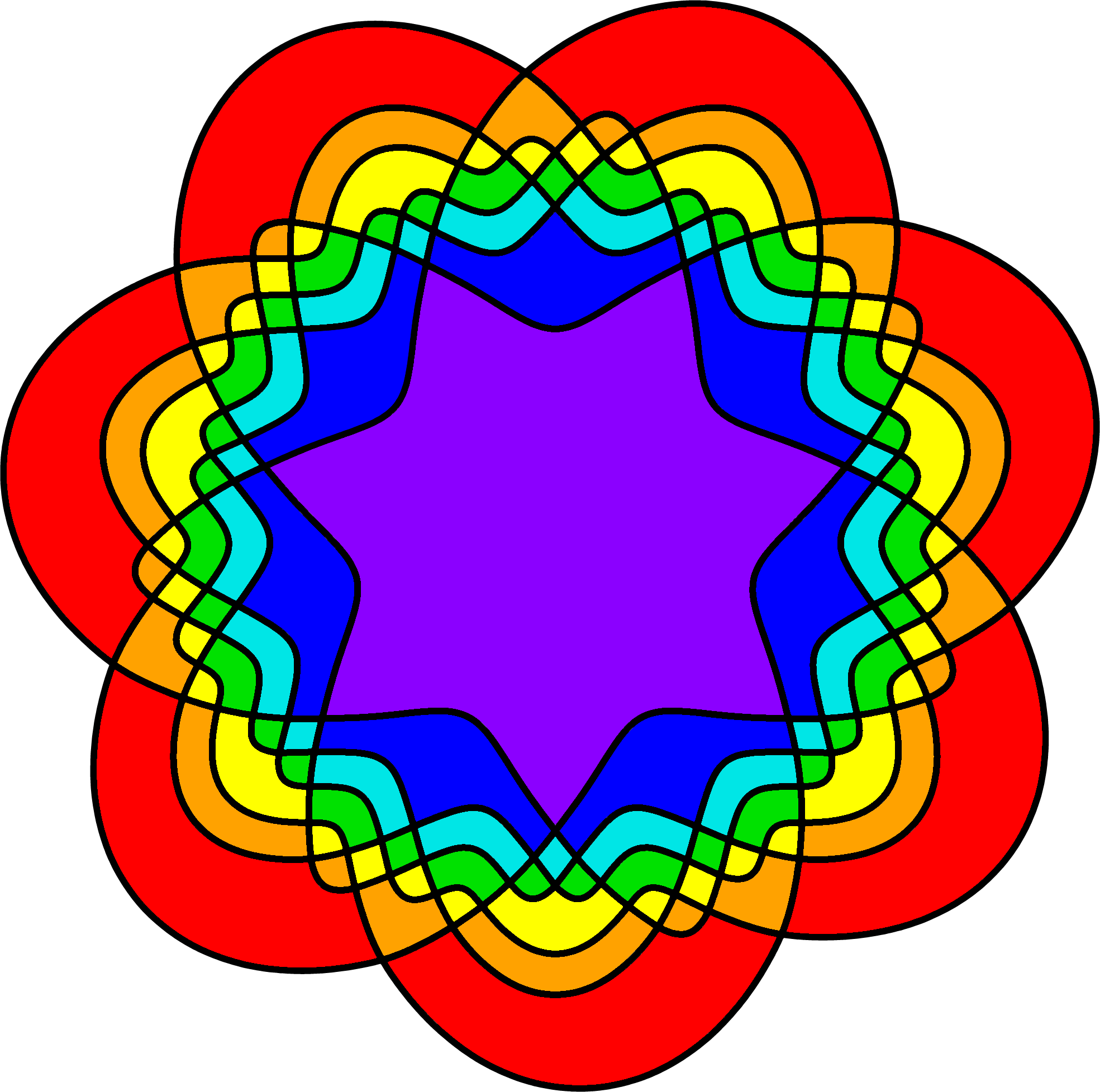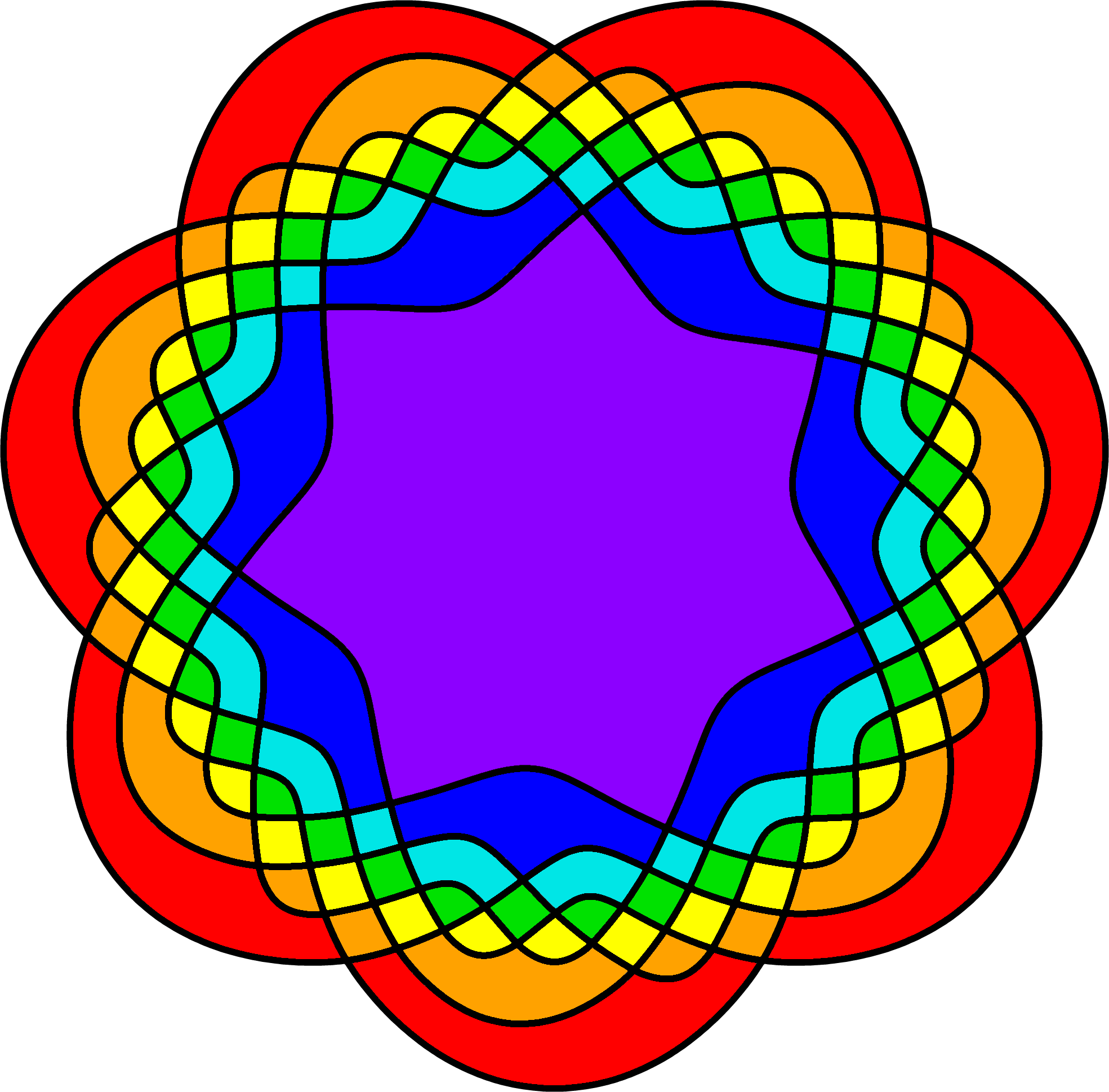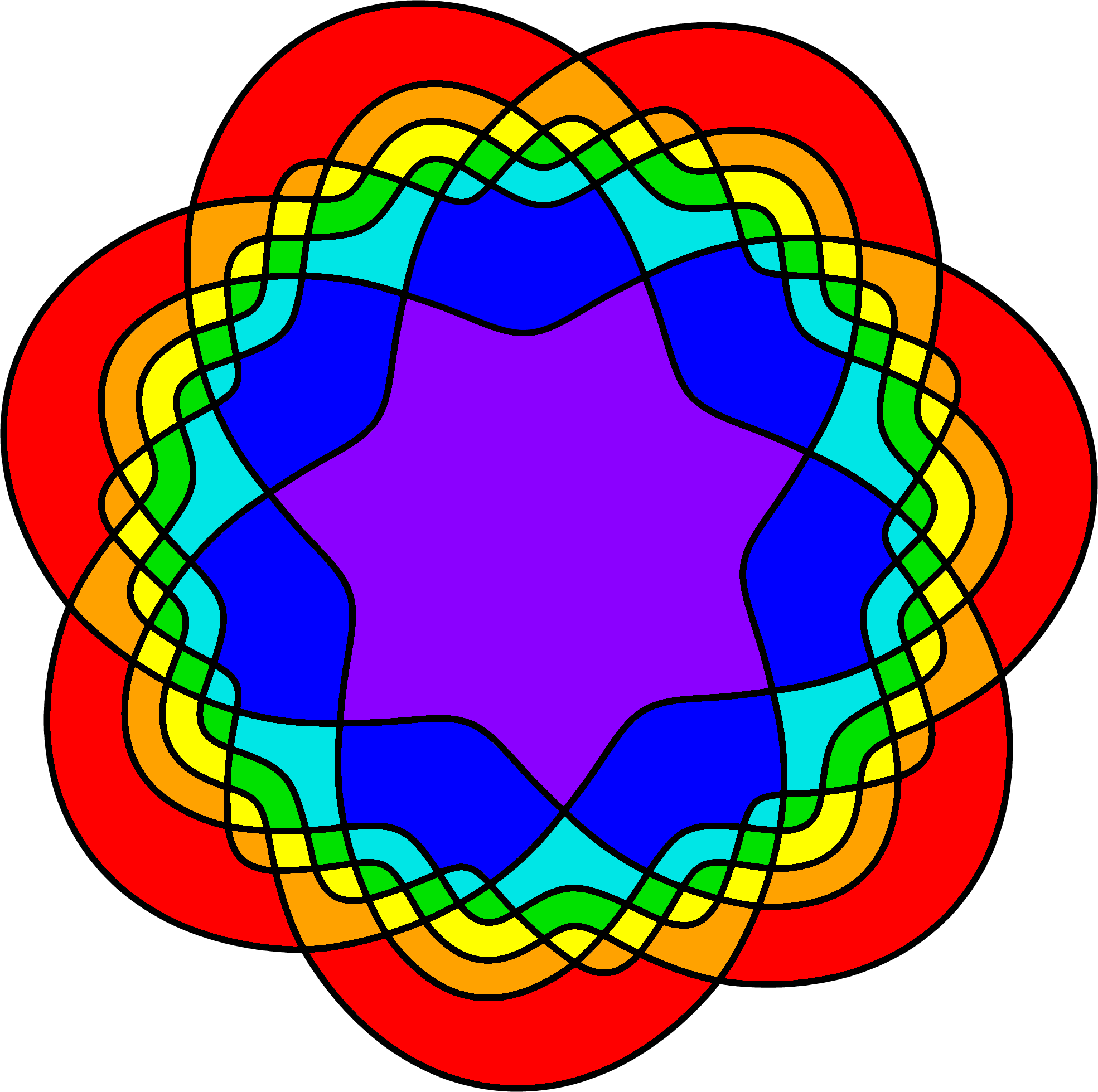A New Rose : The First Simple Symmetric 11-Venn Diagram
Khalegh Mamakani,
Department of Computer Science,
University of Victoria, Canada.
Frank Ruskey,
Department of Computer Science,
University of Victoria, Canada.
Abstract:
In this paper we introduce a new property of Venn diagrams called
crosscut symmetry.
Utilizing a computer search restricted to crosscut symmetry we found
many simple symmetric 11-Venn diagrams.
This answers a problem that has been open since the 1960's.
The first such diagram that was discovered is shown here.
-
The "symmetry" referred to above is rotational symmetry in the plane.
PLEASE NOTE: Symmetric 11-Venn diagrams were known previously,
our contribution is to show that there is a symmetric Venn diagram
in which no three or more curves meet at a point --- such Venn diagrams
are said to be simple.
-
From the arXiv:
pdf file.
-
The pdf file.
-
A poster of the result will appear at
20th International Symposium on
Graph Drawing.
Here is Khalegh's amazing poster.
-
Submitted to a journal.
-
Original submission: July 27, 2012.
Revised submission:
Acceptance:
-
Publicity:
Explanatory Examples with 7 Curves
Below are two symmetric 7-Venn diagrams.
A crosscut is a curve segment that intersects every other
curve sequentially without repetition.
The one on the left, "M11", has a crosscut, but it is not crosscut symmetric.
The one on the right, "M01", does not have a crosscut.

 Below are two symmetric 7-Venn diagrams.
The one on the left, "Hamilton", is both polar symmetric and
crosscut symmetric.
The one on the right, "M4", is crosscut symmetric, but it is not
polar symmetric.
M4 is the one that is used for illustrative purposes in the paper.
Below are two symmetric 7-Venn diagrams.
The one on the left, "Hamilton", is both polar symmetric and
crosscut symmetric.
The one on the right, "M4", is crosscut symmetric, but it is not
polar symmetric.
M4 is the one that is used for illustrative purposes in the paper.

 Crosscut symmetry refers to the idea that the regions on either side
of the crosscut can be drawn with a bilateral symmetry.
The diagram below shows what we call a "cluster"; the colored part of
the diagram on the left. The central
portion of the cluster shows the bilateral symmetry; the colored part
of the diagram on the right. The diagram
shown is "M4".
Crosscut symmetry refers to the idea that the regions on either side
of the crosscut can be drawn with a bilateral symmetry.
The diagram below shows what we call a "cluster"; the colored part of
the diagram on the left. The central
portion of the cluster shows the bilateral symmetry; the colored part
of the diagram on the right. The diagram
shown is "M4".
Examples with the First 11 Curve Venn Diagram
It is recommended that you view these on a big screen!
Also, if some of the diagrams are not showing or are clipped,
then you should try using a browser such as Firefox or Chrome.
The illustration below shows a cyclindrical representation of the
11-Venn diagram.
 And here is 1/11th of the cylindrical representation.
And here is 1/11th of the cylindrical representation.
 Below is the diagram drawn on the plane, with two different styles of filling.
And here is a blow up of part of Newroz.
Below is the diagram drawn on the plane, with two different styles of filling.
And here is a blow up of part of Newroz.
 The illustration below shows the 11-Venn diagram with one curve highlighted
(shown in white).
The illustration below shows the 11-Venn diagram with one curve highlighted
(shown in white).

Below we show 1/11th of the cylindrical representation of the diagram, drawn with the
cross cut drawn as a vertical line segment on the left and right as it intersects
the other curves, and with the bilateral symmetry made explicit.






